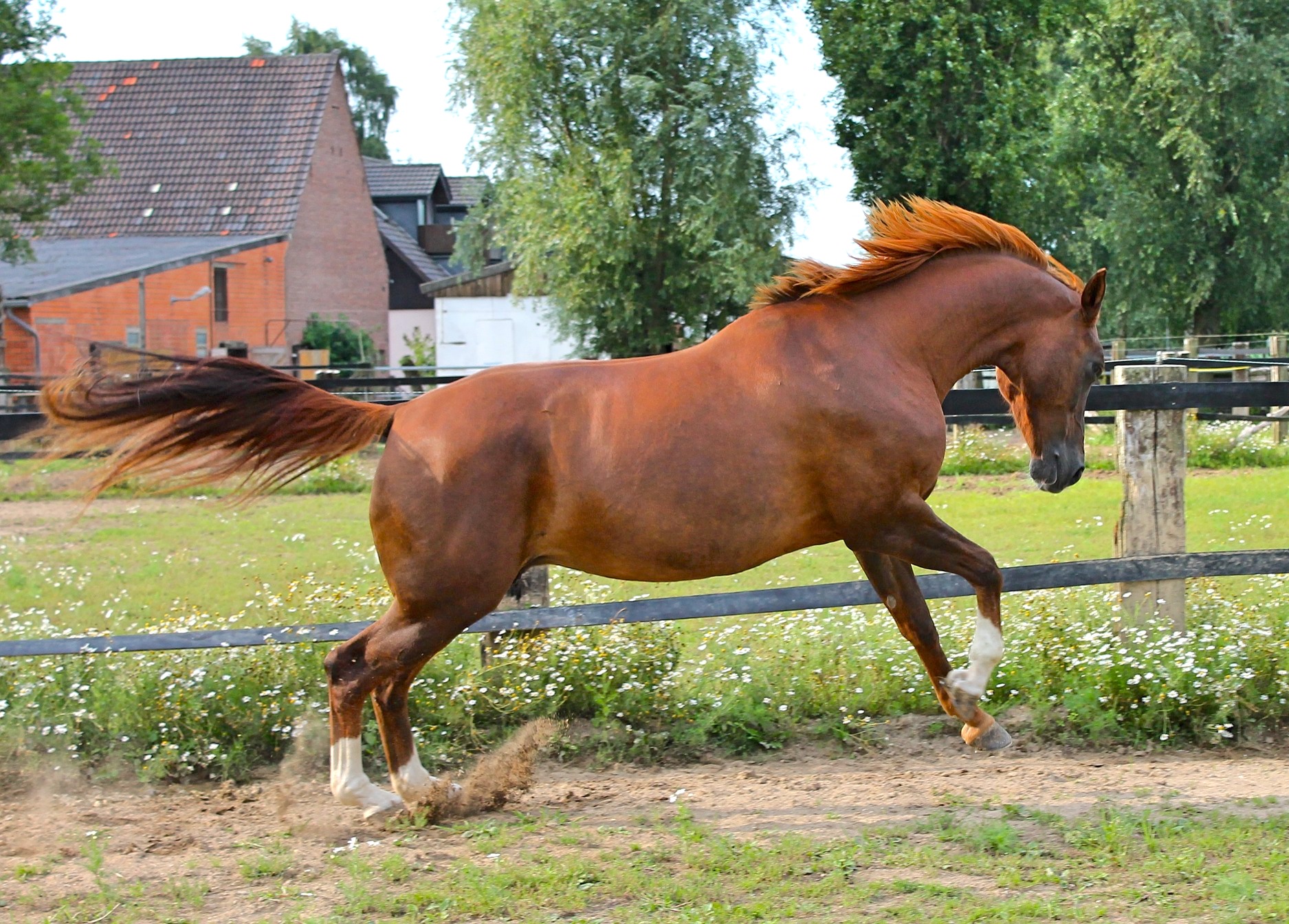Are Chestnuts really more badly behaved than other horses?
Chestnut horses have had a reputation for ‘bad’ or excitable behaviour for some time, with chestnut mares being perceived as particularly difficult. This stereotype of them being hot-headed and crazy is often quoted amongst horse owners, but is there any truth to it?
To find out if there are any genetic associations between coat colour and bad behaviour a team of Swedish researchers analysed information about the coat colour, behaviour, age, sex, breed and discipline of 477 bay and chestnut horses.
The team found that chestnut horses are no more likely to display behaviours like rearing, biting, kicking or bucking than bays. However the results showed that there are significant differences between the behaviour of bays and chestnuts.
Chestnuts displayed more bold behaviours – they were more likely to approach unfamiliar objects and animals in their environment, which is of course a very useful quality. This finding does suggest that breeding for the chestnut coat colour in horses may have also involved selection for boldness and altered the way these horses interact with their surroundings.
Unsurprisingly the study showed also that the breed, sex, and age of a horse does significantly influence many of its behaviours.
If any horse is exhibiting ’bad’ or unusual behaviour it is vital to ask a vet to give them a thorough check up to rule out any physical issues as well as re-evaluating their everyday management, tack fit and training practices. Chestnut horses don’t behave badly just because they are chestnut horses!
These results are very interesting as a number of studies have found that human redheads feel pain differently and have different body reactions than their dark and blonde haired counterparts. Further research has also shown that human redheads require higher doses of some anaesthetics and lower doses of others, so it seems they have different sensitivities to non-redheads. As far as I know there hasn't been any research into differences in skin sensitivity between chestnuts and other coat colours, that would be a fascinating area for research.
You can read the full study here: https://www.sciencedirect.com/science/article/abs/pii/S0168159115003081
